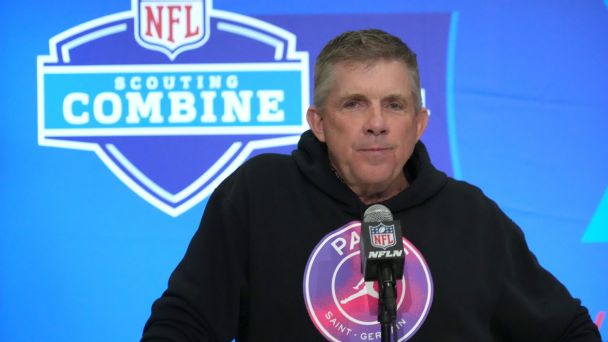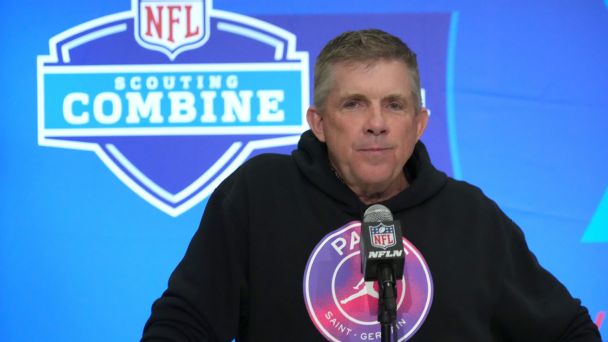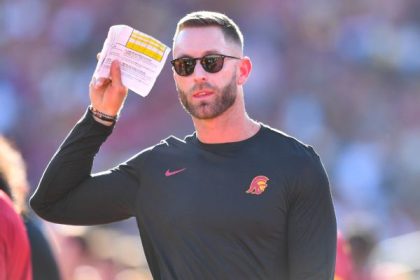
ENGLEWOOD, Colo. — Denver Broncos coach Sean Payton has made it no secret that the team needs to improve its offense during the offseason.
And as the Broncos grind through draft preparations, they have eight picks at their disposal.
“Overall, collectively, starting with me, [the offense] wasn’t good enough,” is how Payton put it earlier this offseason. ” … I would say we have to be great with the details, and obviously, we weren’t good enough with the details if there were certain mistakes that were repeating themselves. That starts with the teaching, our coaching. Are we saying the right things?”
This isn’t a new problem for the Broncos. In their 8-9 finish in 2023, the Broncos were 19th in scoring (21 points per game). They haven’t finished above 19th in scoring since 2014, and while the reasons have varied from Peyton Manning’s foot injury in 2015 to a carousel of starters behind center in 2017 to the maddening red zone struggles of 2023, the Broncos won’t really be back in the playoff conversation until their offense steps up.
As they look at how the draft board unfolds this time around, certainly what happens at quarterback will lead any discussions. Denver released Russell Wilson in early March, sat out free agency at the position and possesses the No. 12 pick in the first round.
The Broncos have spent plenty of time with and put most of the top quarterbacks on the board through an exam of sorts to test preparation and retention of information. And whether they trade up, back or stay put in the first round will have a lot to say about whether they come away with a rookie they view as a future starter behind center.
But beyond quarterback, some of those eight picks have to include other positions on offense.
General manager George Paton said at the combine that if the Broncos stayed at 12, he believed there would be “12 to 15 players that we have high grades on.”
The Broncos need finishers in the red zone. They were 20th in touchdowns scored when the offense got inside the opponents’ 20-yard line last season and 30th in touchdowns scored from goal-to-go situations.
“Our tight red zone was awful,” Payton said at season’s end. “I have to look closely at my sequencing and what I’m doing and calling … Inside the 10, first and goal-to-go, that wasn’t good enough.”
Courtland Sutton led Denver with 10 receiving touchdowns last season and was the only Bronco with more than four. The Broncos only had three touchdown receptions from their tight ends — all from Adam Trautman.
Their eight rushing touchdowns were tied for 28th.
If the Broncos are looking for quick, impactful help at tight end, even with the expectation that Greg Dulcich is healthy and a significant part of the offense next season, they might have to use their first-round pick to do it. Especially if Georgia’s Brock Bowers is still on the board.
The Broncos don’t have a second-round pick, and their third-round pick is 76th overall, so if not in the first round with Bowers, it becomes more of a developmental choice with one of the other tight ends down the board.
The receiver class, however, is deep, and the Broncos could add help from anywhere on the board, even well into Day 3.
Payton doesn’t have the multitasker at running back like he had during his long tenure in New Orleans with players such as Alvin Kamara or Reggie Bush. There are intriguing possibilities beyond the first round such as Florida State’s Trey Benson, Tennessee’s Jaylen Wright, Kentucky’s Ray Davis and Clemson’s Will Shipley — all players who could offer help as runners or receivers.
The Broncos did sign some experienced veterans along the offensive line after free agency’s initial wave — guard Calvin Throckmorton, tackle Matt Peart as well as center Sam Mustipher — so that would indicate they may, at least in Days 1 and 2 of the draft, focus their efforts elsewhere unless they see a prospect still on the board they have graded well above where they’re picking.
But Payton wants those up front and whoever ends up being behind center to be better with the opportunities the offense does get. Asked at league meetings last month about the root of the offense’s struggles, he said, “Number one, we can’t take as many sacks. If you looked at any of the data relative to what it does for your drives, I think that was a big thing that hurt us a year ago. But obviously you have to be efficient running the ball. There’s a lot that goes into that.”
In the end, Payton simply wants the pieces, those set to arrive in the draft weekend included, to fit together better.
“Here’s the thing — I think it’s easier when you get older and more secure with who you are and what you do,” he said. “When you’re younger, I think oftentimes you can be very defensive with certain things. The one thing that I know is how to win. Sometimes it may not be that you got 480 yards. Understanding the strength of your team and then playing to that.”









